University calendars tend to operate on a different year than the standard January-December. The academic calendar begins in the fall, and the budget calendar restarts in the summer, and so January 1 is simply the restart after a holiday break. However, the new year is a good time to consider the many new unique and special acquisitions that we have added to the Norman E. Alexander Library. (And considering that our last special collections acquisitions roundup was back in March 2022, we’re certainly overdue for another!)
In order of age, then, we start with a large roll from the late 15th century. Written on parchment, and measuring nearly 9 feet unrolled, this manuscript is an estate survey for the sale valuable parcel of land in the vicinity of the village of San Vito on the outskirts of Lodi. Most unusually, it was owned by a Jewish family under the protection of the Renaissance general Filippino Fieschi. We don’t know very much about the family that owned this land, other than their names: Chresino and Grassino, sons of Jacob, as well as Benedicto. Also mentioned in the document are Leo and his sisters Ventirie and Belle. The family is documented as having arrived from “Roine,” which is possibly Rhone in the south of France. The estates listed were evaluated as worth 1950 livres ‘valoris,’ a very high sum of money. In many places, Jews were not allowed to own land, much less an estate of this size, and so this manuscript has much potential for new findings on the history of the Jews in 15th century Italy.
Another Italian addition to our collection is an interlinear translation of Targum Sheni (a midrashic commentary) of Megillat Esther dated to the 18th century. Clearly the Italian-speaking user of this manuscript was interested in studying the book of Esther and wanted to understand the text in his or her native tongue and so translated the entire text.
Moving northward to the Netherlands, we acquired a remarkable book, exquisitely bound, which includes prayers in Spanish for the entire year. Printed in Amsterdam between 1706 and 1716, and bound with a volume of the Pentateuch with Haftarot printed in 1691, this volume is particularly remarkable because of a leaf inserted between the two books. The document, in Dutch, details the transfer of printing permissions obtained by David de Castro Tartas to Moseh Coutinho, and dates of monopolies granted regarding the printing of a number of important Hebrew works. This document is issued by Simon van Beaumont and is unknown from any other source; it is an important witness to the development of Amsterdam’s important Hebrew printing industry. The document sheds new light specifically on the timing of the transfer of rights between Tartas and Coutinho, which has long been the subject of scholarly contention.
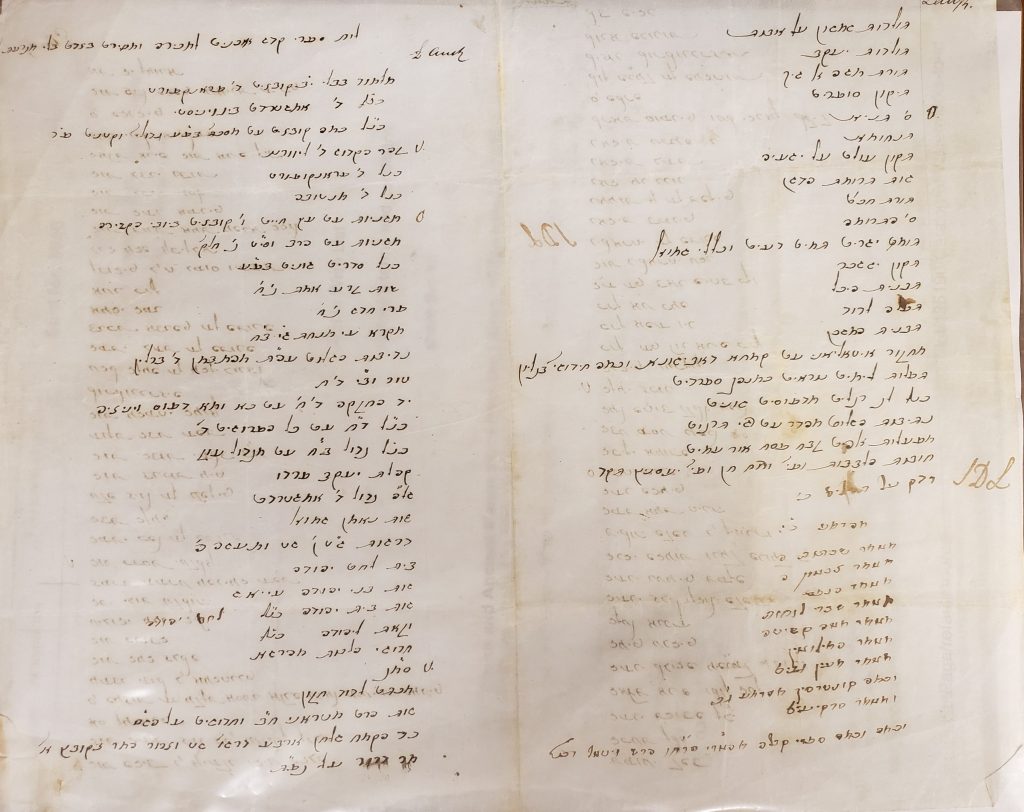
We added another item to our extensive collection of materials by Shemu’el David Luzzatto. This document includes a list of books owned by the rabbi and scholar often know as “ShaDaL,” which apparently were being prepared for sale from his personal library.
Moving to the modern era, we were grateful for a donation of two series of lithographs decorating a Haggadah produced in 1978. Both include the illustrations of Polish-Israeli artist Shlomo Katz (1937-1992). One of the copies includes an English translation of the traditional seder text, while a second translates the text into Ladino. Both editions were published by Leon Amiel. The volumes will be a lovely addition to the library’s collection of artists’ books.
Another modern acquisition to our collection this year was a collection of recent prints by Lynne Avadenka called “The Female Forme.” Incorporating words from Song of Songs about the “woman of valor,” Avadenka’s series focuses on “the work of her hands,” highlighting Jewish women printers throughout history, such as Yehudit Rosanes, Estellina Conat, Deborah Romm, and others. These are quite relevant to a seminar on Jewish Book history that will be reprised in the Rare Book and Manuscript Library in Spring of 2023.
We look forward to identifying new and unique materials to add to the collection in 2023!
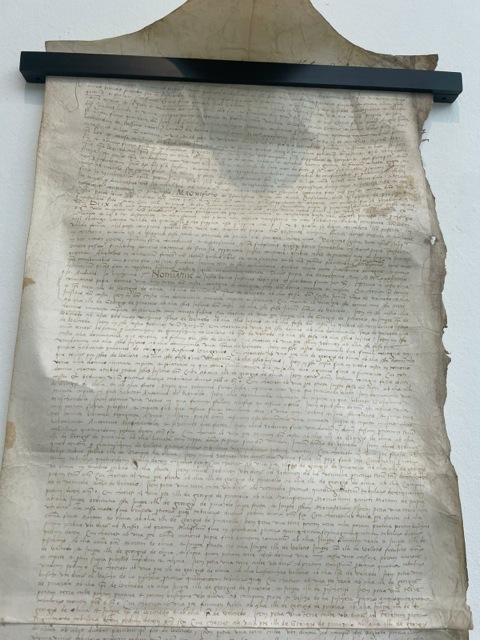
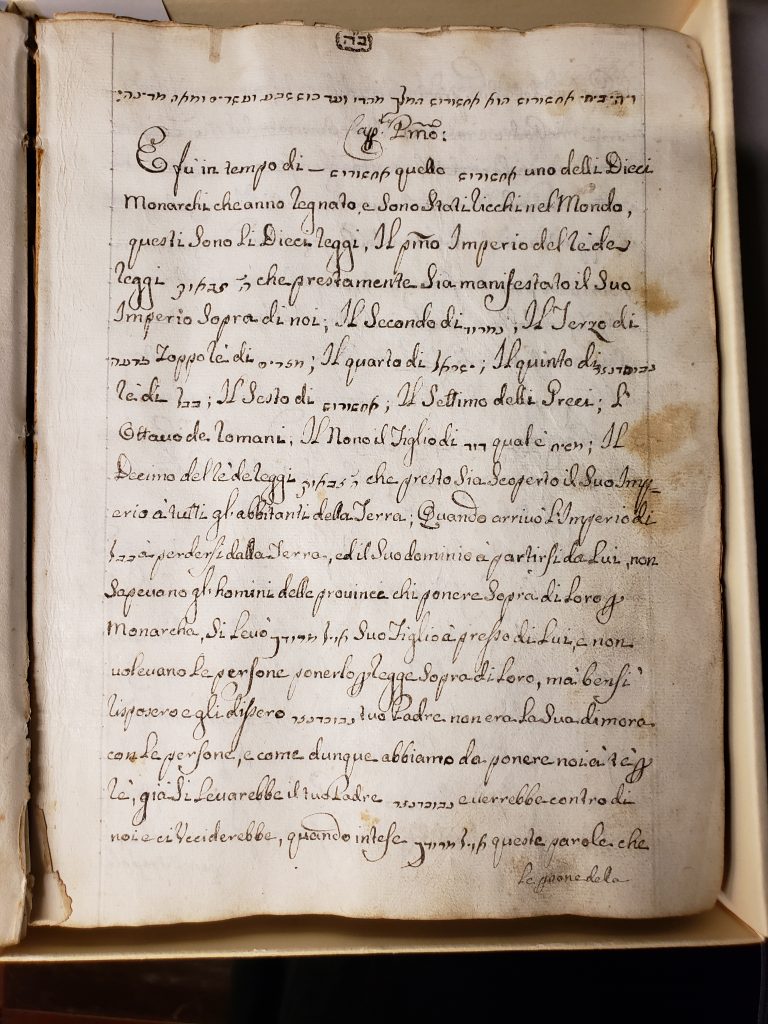
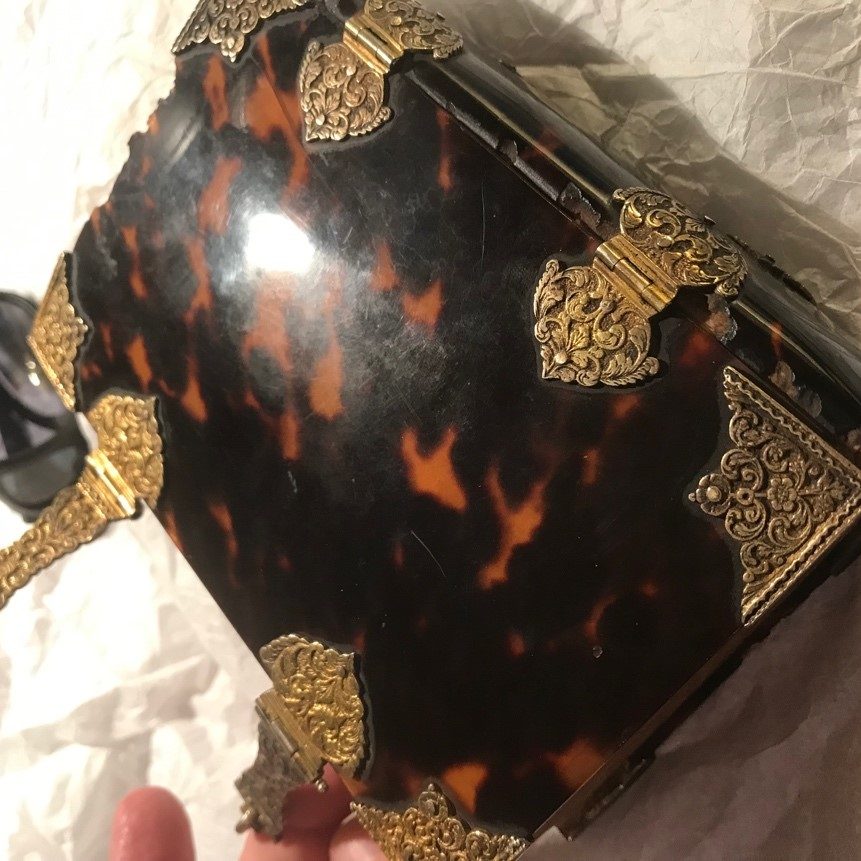
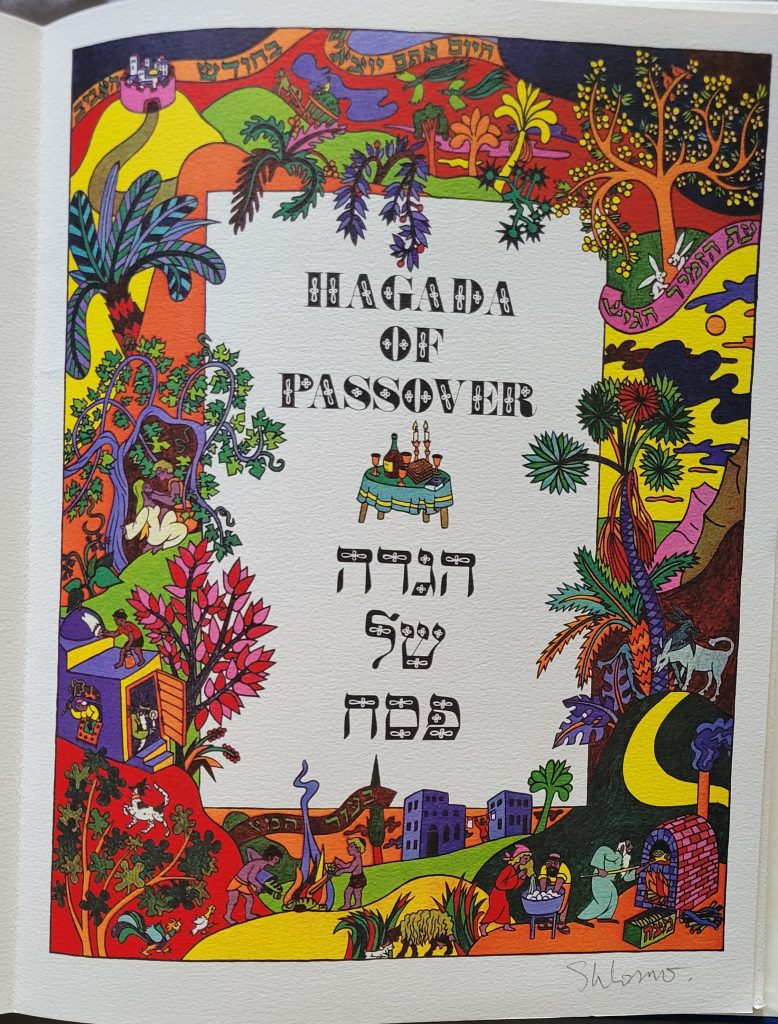
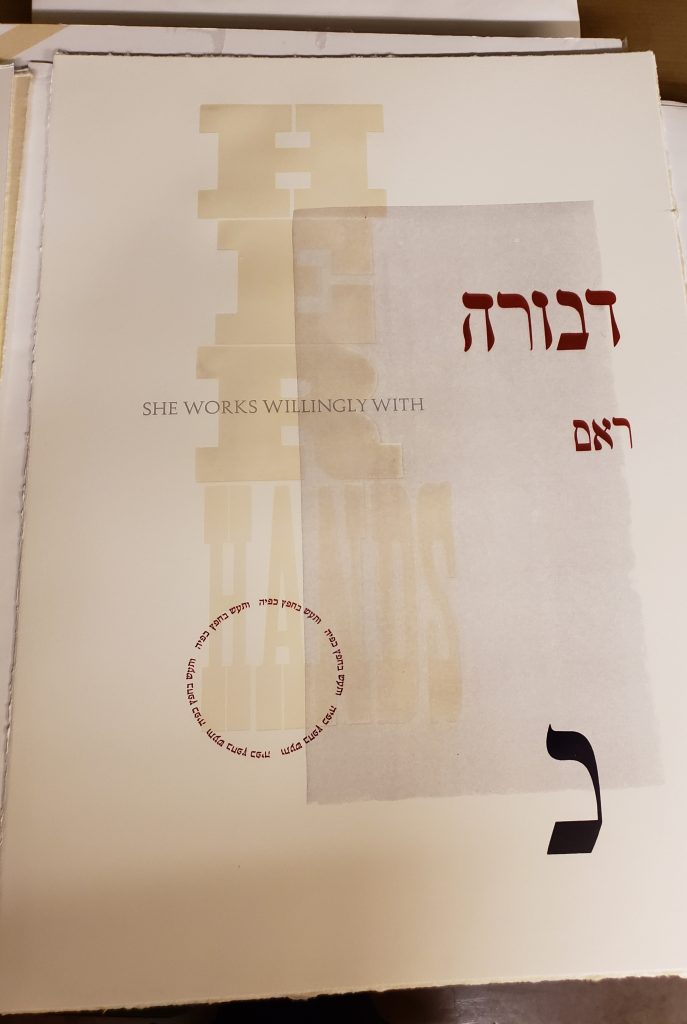
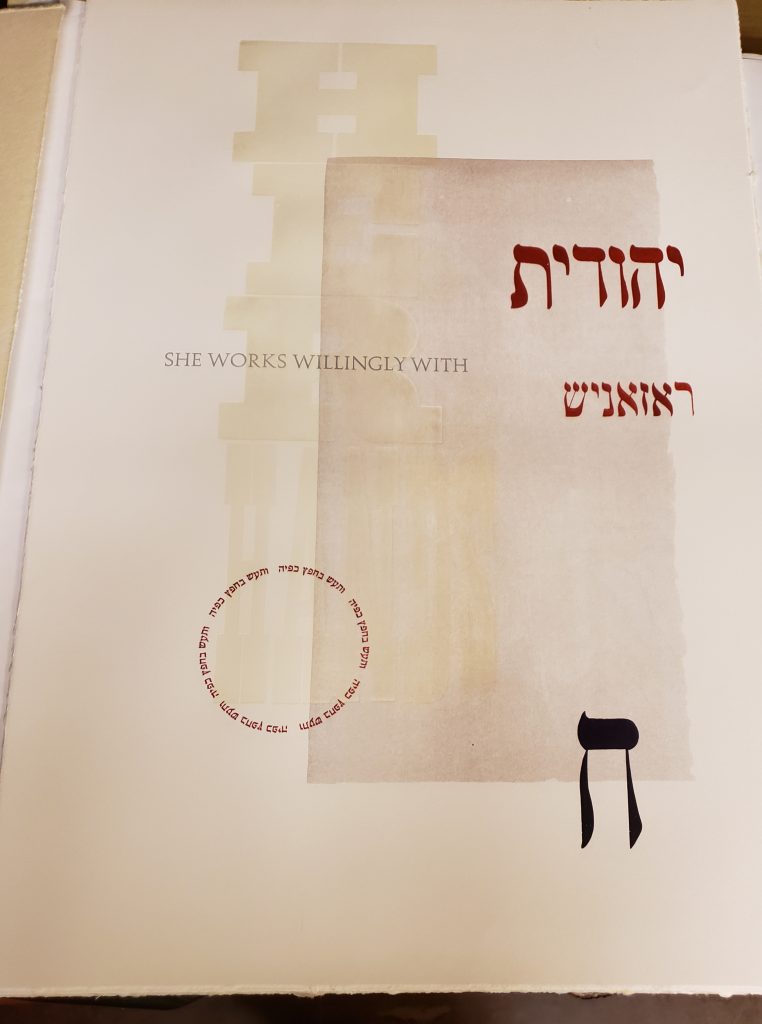
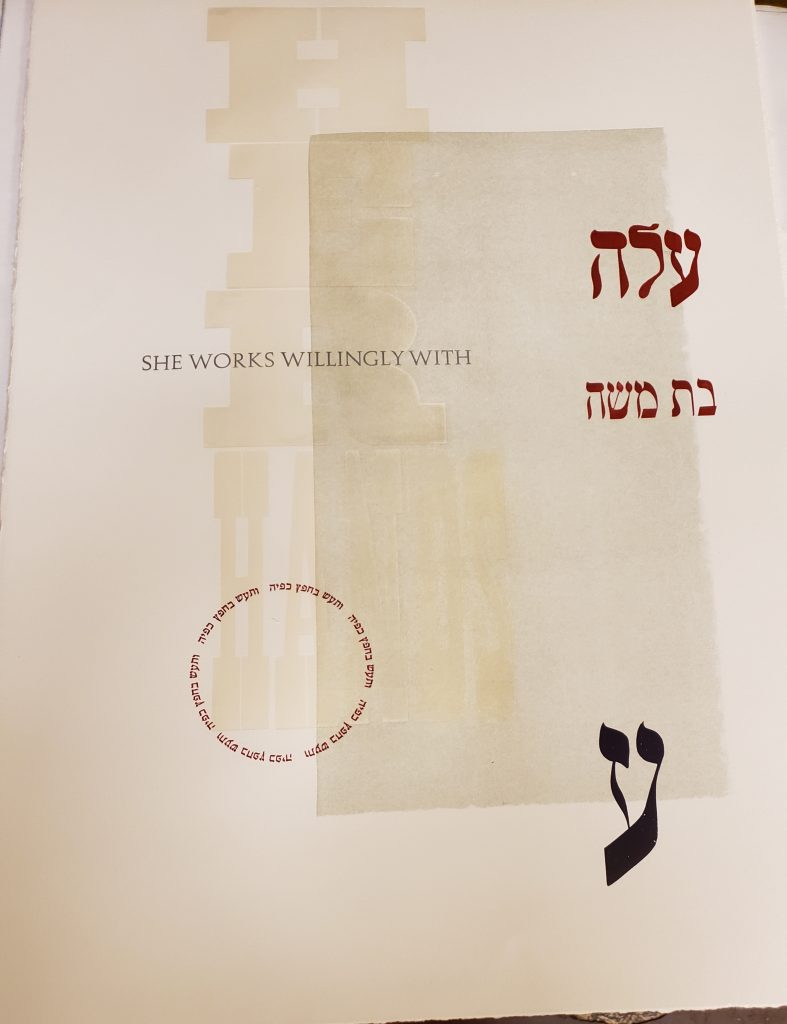
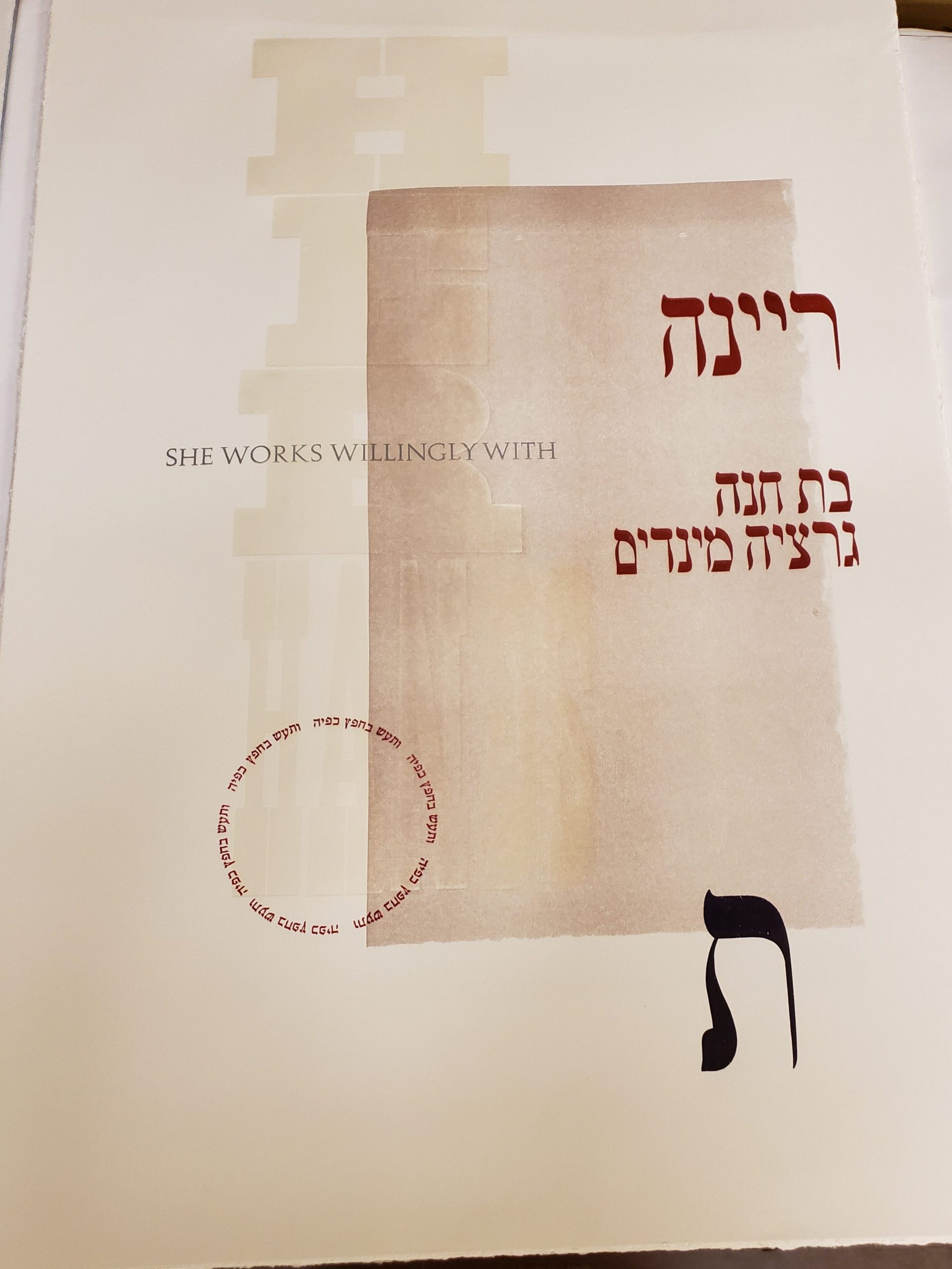
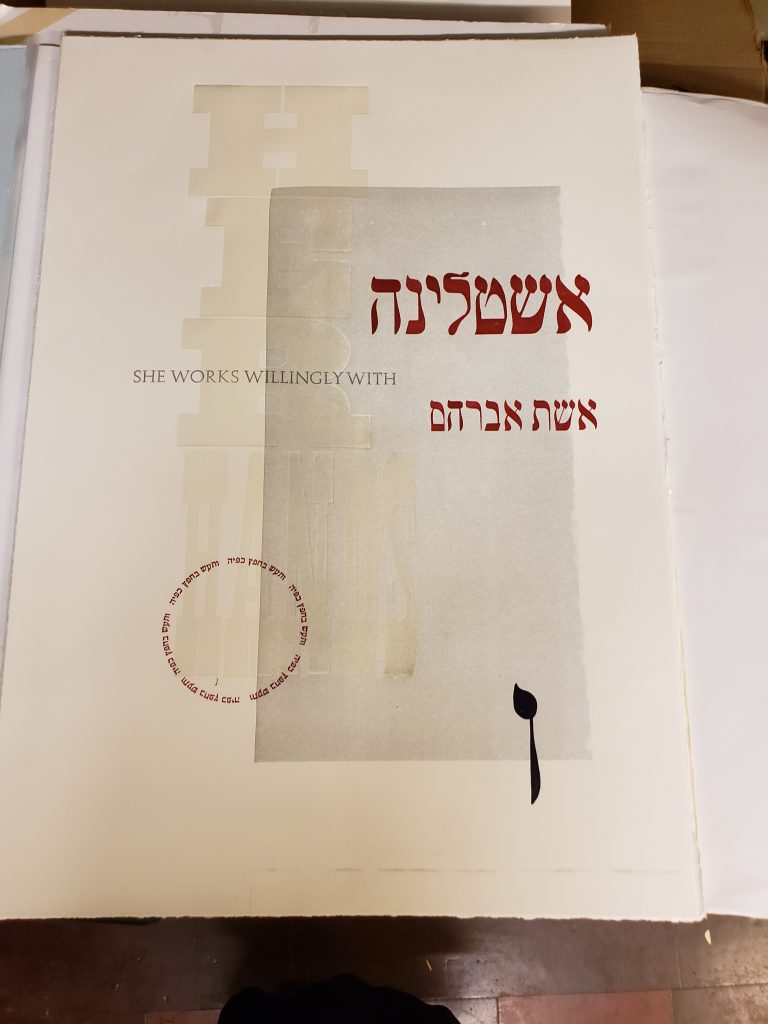
Nice post